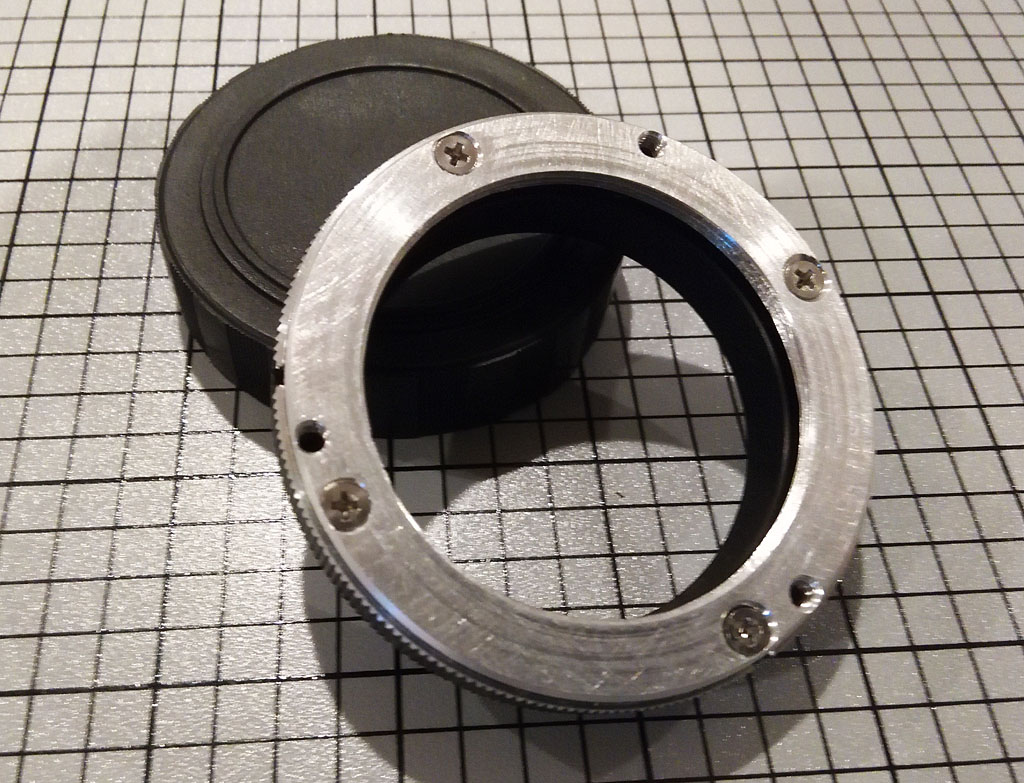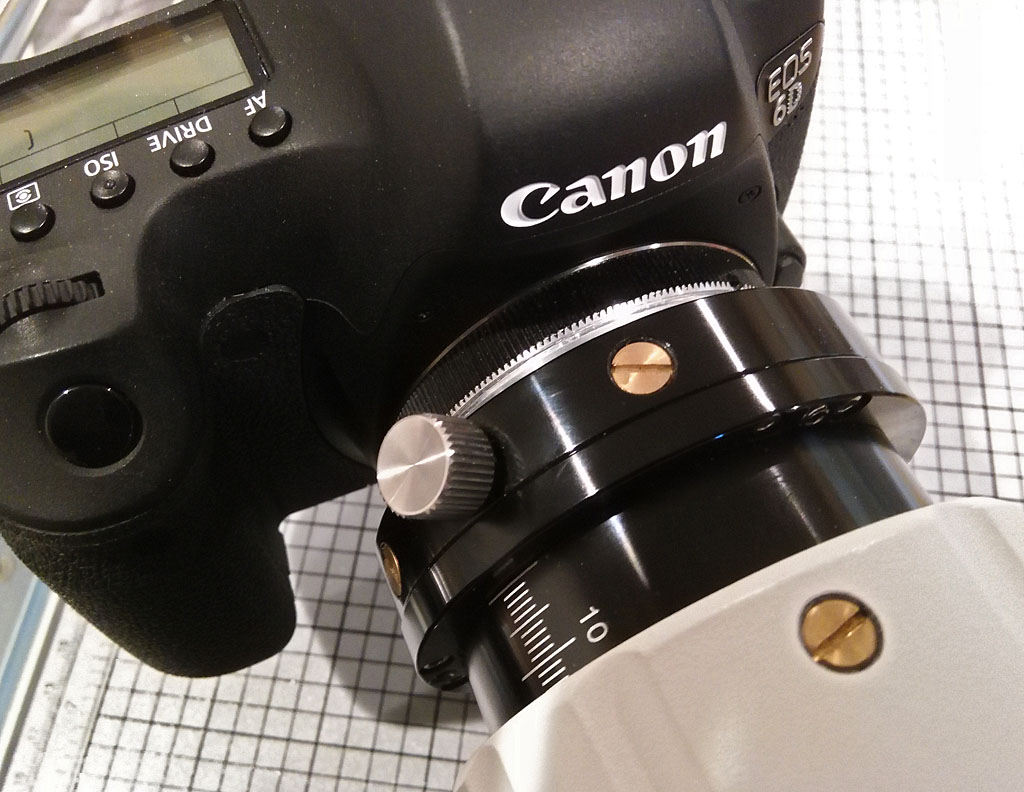When I first started in astro-photography back in 2005, it quickly became apparent that some of the “bits and pieces” needed to assemble gear into a working system were not readily available. I’m not alone in this experience – I recently met a guy who, like me, actually got into machining and bought expensive tools primarily to make the parts needed for astronomy.
In my case, some of the parts needed were relatively “new ideas” that were not readily available elsewhere, which led me to manufacture and offer them for sale to others. A prime example of this is the “Mister T” (MRT) adapter, which provides a much needed improvement on the traditional T ring used to connect a camera to a telescope. I’ve now made a prototype variant of the MRT, the MRT-M48.
The standard T ring has a 42 x 0.75mm thread on the telescope side, a standard that has been around for many years. But although it was originally designed for full-frame 35mm cameras, its use in astro-photography sometimes results in significant vignetting in the corners of images, especially with full-frame DSLRs such as my Canon 6D. To avoid this, some telescopes designed for astro-photography, such as my William Optics Star71, come with larger 48 x 0.75mm threads on the back of the focuser. William Optics includes an adapter with matching 48mm threads, but it, of course, does not have the advanced features of the MRT.
So, once again, I made my own adapter. It wasn’t possible to just enlarge the opening in a standard MRT to 48mm because the metal ring becomes so thin that it wouldn’t be strong enough. Instead, I machined off the front portion of the MRT and replaced it with a disk of appropriate thickness and cut the 48 x 0.75mm threads into it. This gives up the camera rotation feature of the standard MRT, but for the Star71 that is not needed because the ‘scope has its own rotation feature.
For now, I do not plan to offer this as a finished product because it requires cutting the 48mm threads, which is difficult for the amateur machinist to do with consistent high quality (if the quality of the first image above was better you could see that the threads are a bit “ratty”). But I’m always thinking about ways to improve the quality of my products – and how to solve other problems in astro-photography.

